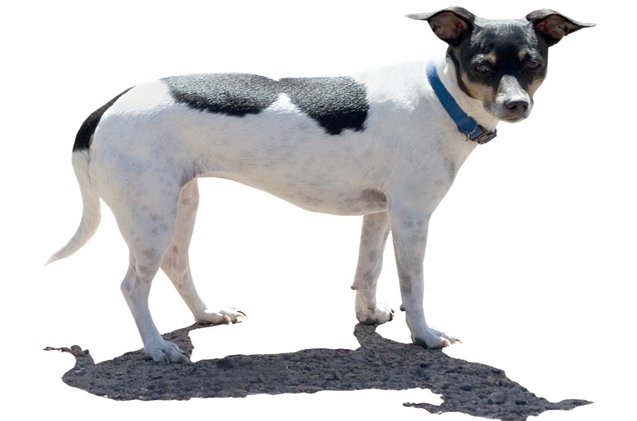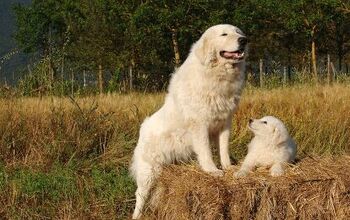Rat Terrier


About Rat Terrier
A small dog with a big heart and large amount of energy, the Rat Terrier is a loyal, active and playful breed that fits into a variety of households. Originating in England and making its way over to America, this dog was once used on farms for a multitude of functions, but he has made his way into everyday households and into the hearts of dog lovers. He’s a great companion for exercise and affection, and will keep the kids busy all day long.
An intelligent breed, the Rat Terrier has a bit of a stubborn streak that may make it a challenge to train. But if you put the time and effort into this small dog, you’ll be rewarded with a well-behaved friend that will never leave your side. To learn more about the Rat Terrier, please continue reading.
A small dog with a big heart and large amount of energy, the Rat Terrier is a loyal, active and playful breed that fits into a variety of households.
Tracing its origins to England, the Rat Terrier was an indispensable asset on the farm. This breed would go after rats that infested barns, as well as chase of rodents that threatened the crops. Rat Terriers made their way to the United States with English immigrants in the 1890s, where it once again worked on farms. From 1910 through the 1930s, the Rat Terrier was one of the most common farm dogs, as it was used for ratting, hunting varmints and other important work.
This breed had a fan in President Theodore Roosevelt, who took several with him on his hunting trips. He also used the Rat Terrier to keep rodents out of the White House (feel free to insert your own political joke here).
Before making its way to the U.S., the Rat Terrier got its start in 1820s England. The breed is a result of crossing the Smooth Fox Terrier with the Manchester Terrier. As well, it was mixed with the Whippet, the Italian Greyhound and the Beagle and the Smooth Fox Terrier for speed, tracking and trailing abilities.
Because this is high-energy dog, you’ll need to feed your Rat Terrier the proper amount of a high-quality kibble – a quality dog food can make all the difference. Feed your dog twice a day rather than leaving the food out all day long.
The Rat Terrier is quite intelligent, but is also stubborn.
The Rat Terrier is quite intelligent, but is also stubborn. They aren’t eager to please you – they’re in it for their own fun! That’s why you should either have some experience training dogs or be prepared to enlist the services of a professional. A good way to get the upper hand when it comes to training is to start early. Keep training sessions short and interesting in order to keep your dog focused.
After you’ve conquered the basics, your Rat Terrier will be ready to take training to the next level. This breed excels at agility training and Earthdog activities. Anything you can do to keep these dogs occupied is helpful, as it keeps both their minds and bodies active and engaged.
A Rat Terrier stands 14 to 23 inches and can weigh anywhere between 12 to 35 pounds.
You’ll always be on your toes with the Rat Terrier. That’s because they are smart, stubborn and active. They love their family, but it takes a while to warm up to strangers. With proper socialization, this breed will get along with everyone – people and animals alike. If not, there is a chance they can become aggressive. Start the socialization process while he is still a puppy and introduce him to new sights, sounds and experiences.
The Rat Terrier makes a wonderful family pet. That’s because they are perceptive and respond to your moods intuitively. This breed will soak up your praise and if you let him, he’ll follow you around like a shadow. The Rat Terrier was bred to be useful and active, so if you don’t give him something to do, he’ll become destructive.
With a long lifespan, the Rat Terrier has few heath issues. However, the most common you may come across in this breed include food and contact allergies, elbow and hip dysplasia, malocclusion (incorrect bites), demodicosis (demodectic mange) and patellar luxation.
The Rat Terrier has an average lifespan of 15 to 18 years.
Don’t let its size fool you – the Rat Terrier as plenty of energy to spare. It needs at least 40 minutes of exercise a day in order to keep healthy and happy. If you live on a farm, this breed will go to work keeping the rodent population in check. If not, take your Rat Terrier for walks a few times a day, or take him to the dog park to work off all that excess energy. And there’s nothing that the Rat Terrier likes more than to play catch for hours on end.
Because of its small size, this breed can live in an apartment, but you have to be committed to making sure they get outside for daily exercise. Once they get tuckered out, your Rat Terrier will happily curl up on the couch by your feet.
You’ll always be on your toes with the Rat Terrier. That’s because they are smart, stubborn and active.
The American Kennel Association says this about the breed: “The Rat Terrier is a multipurpose companion dog that is capable of hunting rodents and vermin above and below ground as well as coursing small game. He is a sturdy, compact, small-to-medium sized parti-colored dog giving the appearance of elegance and athleticism.” The Rat Terrier was accepted by the AKC in 2014.
The Rat Terrier’s coat is short and smooth with dense, shiny fur. It comes in a variety of colors and combinations, including white, black with tan or rust, white and black or tan, red, lemon, blue, chocolate and orange. As well, it’s not unusual to see ticking and dark colors.
This breed’s coat is low maintenance, so it only needs weekly brushings. This helps to control shedding. Use a soft brush or a rubber curry mitt to remove loose hair. Expect heavier shedding in the spring and fall.
Training should start right way for a Rat Terrier puppy. This will ensure that he listens and obeys as he grows older. Crate training is also a good idea for this breed, as it helps with destructive chewing. However, your puppy shouldn’t spend long periods of time in his crate – he needs to explore his surroundings and exercise. Puppy Kindergarten classes are recommended for Rat Terrier puppies.
Photo credit: Beth Van Trees/Shutterstock, Lisa Turay/Shutterstock

Amy Tokic, Editor of PetGuide.com, is a passionate animal lover and proud pet parent of Oscar, a Shih Tzu/Chihuahua cross, and Zed, a Japanese Chin. Her love of animals began in kindergarten, when she brought her stuffed dog Snoopy into class with her every day. Now, she writes about her adventures in pet ownership and tirelessly researches products, news and health related issues she can share with other animal enthusiasts. In her free time, Amy loves perusing used book and record stores, obsessing over the latest pet products available and chasing squirrels with wild abandon (a habit attributed to spending too much time with her pooches).
More by Amy Tokic

























